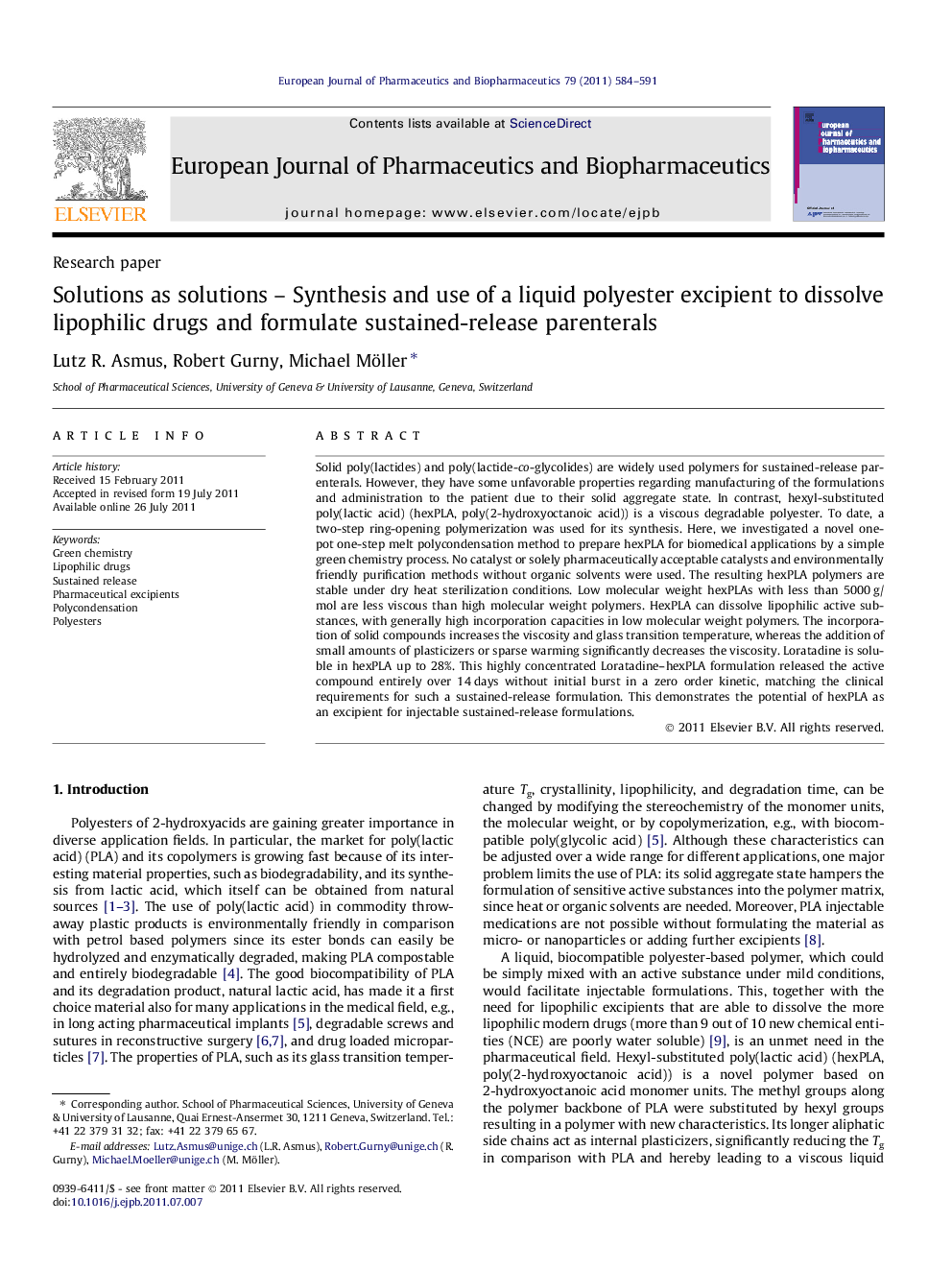| Article ID | Journal | Published Year | Pages | File Type |
|---|---|---|---|---|
| 2084121 | European Journal of Pharmaceutics and Biopharmaceutics | 2011 | 8 Pages |
Solid poly(lactides) and poly(lactide-co-glycolides) are widely used polymers for sustained-release parenterals. However, they have some unfavorable properties regarding manufacturing of the formulations and administration to the patient due to their solid aggregate state. In contrast, hexyl-substituted poly(lactic acid) (hexPLA, poly(2-hydroxyoctanoic acid)) is a viscous degradable polyester. To date, a two-step ring-opening polymerization was used for its synthesis. Here, we investigated a novel one-pot one-step melt polycondensation method to prepare hexPLA for biomedical applications by a simple green chemistry process. No catalyst or solely pharmaceutically acceptable catalysts and environmentally friendly purification methods without organic solvents were used. The resulting hexPLA polymers are stable under dry heat sterilization conditions. Low molecular weight hexPLAs with less than 5000 g/mol are less viscous than high molecular weight polymers. HexPLA can dissolve lipophilic active substances, with generally high incorporation capacities in low molecular weight polymers. The incorporation of solid compounds increases the viscosity and glass transition temperature, whereas the addition of small amounts of plasticizers or sparse warming significantly decreases the viscosity. Loratadine is soluble in hexPLA up to 28%. This highly concentrated Loratadine–hexPLA formulation released the active compound entirely over 14 days without initial burst in a zero order kinetic, matching the clinical requirements for such a sustained-release formulation. This demonstrates the potential of hexPLA as an excipient for injectable sustained-release formulations.
Graphical abstractThe liquid polymer hexyl-substituted poly(lactic acid) was synthesized by simple and environmentally friendly melt polycondensation. Lipophilic drugs were soluble in the polymer matrix, and injectable sustained-release formulations with zero order release were prepared.Figure optionsDownload full-size imageDownload as PowerPoint slide
